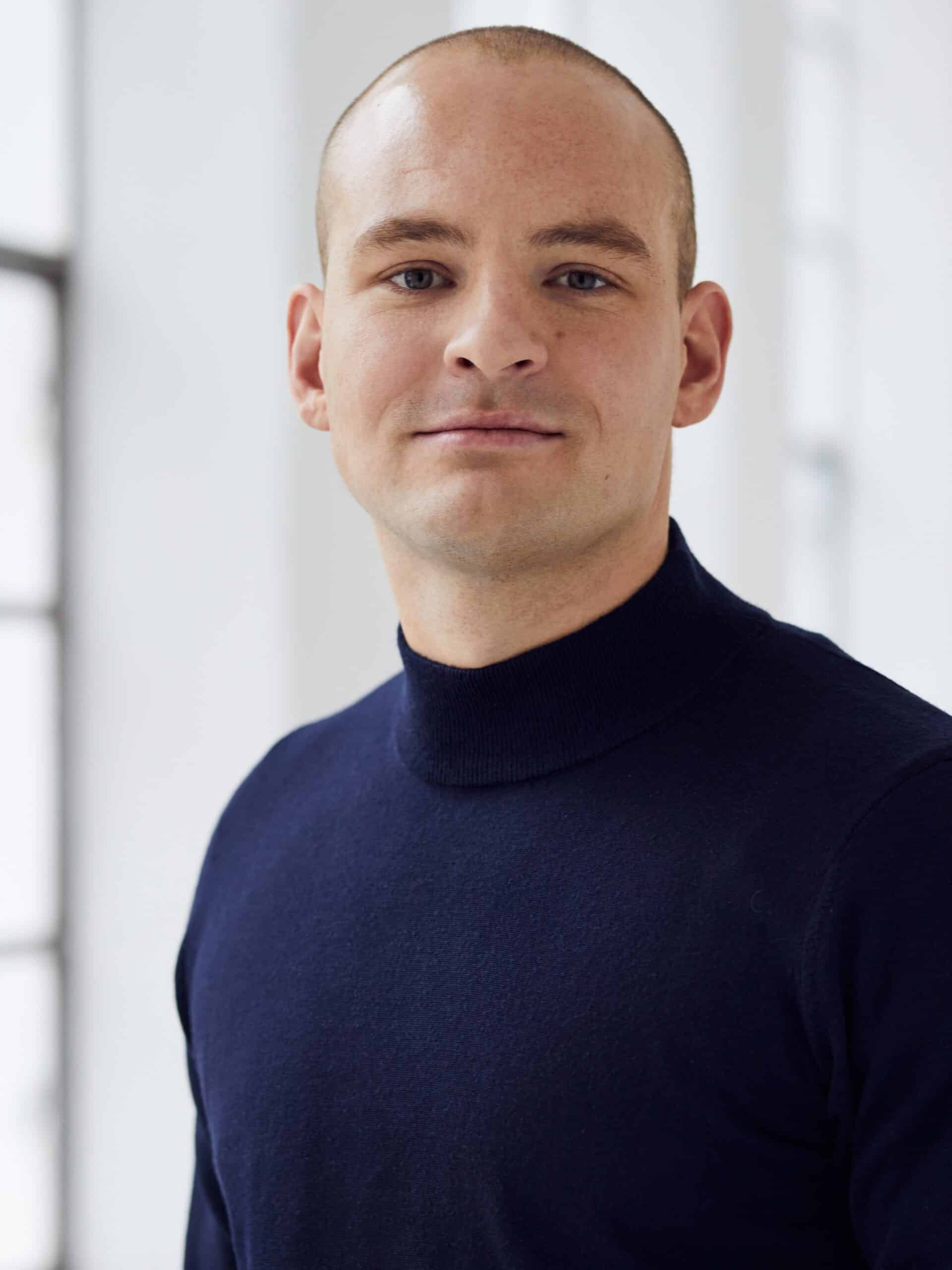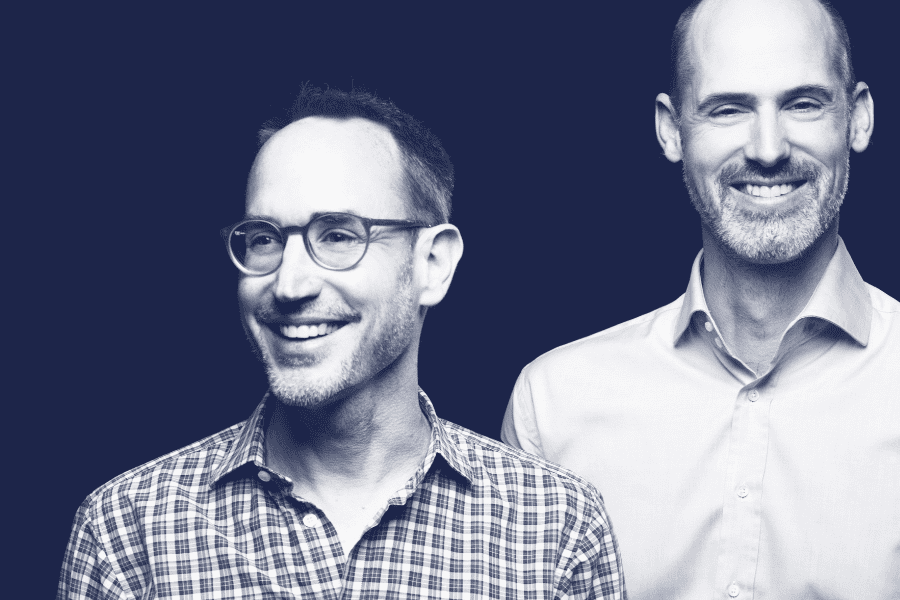How do you ensure employee engagement when working from home is the new normal? Startup cofenster gives internal communications a tool to produce good-looking videos with a few clicks. The startup, which was only founded in 2020, already counts Accenture, Migros and Beiersdorf among its clients. In this interview, CEO Tom Vollmer explains why corporate communication needs to become more personal.

Co-founder and CEO, cofenster
Tom founded cofenster in 2020 together with Olli Wegner and Finn Frotscher. cofenster is a software tool aimed at enterprises that allows creating, hosting, and distributing video and audio content and receiving feedback from employees in a GDPR compliant way. Prior to cofenster, Tom co-founded and sold Collective Brain, a digital network marketing agency with more than 9000 freelancers.
Tom has a Bachelor of Business Administration from Copenhagen Business School.
Video as a tool for internal communication is nothing new. Why did you decide to launch a startup in this space?
In 2018, Olli Wegner and I founded a marketing agency that worked with a very large network of freelancers for corporate clients such as Amazon or Beiersdorf. We quickly realized that there was a large and growing demand from corporates to use videos, but that producing and editing them was a major pain point. They only had two alternatives: Do-it-yourself or hiring an agency. Of course, they could use one of the many software tools that are free or cheap, but people in corporate communications often lack the skills to do everything in-house. They don’t want to deal with problems like how to license music for a video, for example. In any case, they don’t have the time for that. The alternative, a professional agency, comes at a hefty price of several thousand Euros per day.
We saw the need for a software tool to make video production so easy and automated that everyone in a company, no matter if he or she is 20, 30 or 50 years old, can produce very good-looking videos in a matter of minutes. Finn joined us as CTO, we sold the agency and concentrated on developing this software. That’s how cofenster was born. When Covid came, many companies made huge leaps in digitalization. Zoom is nice and widespread, but video is also a huge asset for asynchronous communication. Videos are emphatic and human, people prefer watching other people talking to scrolling alone through endless presentations.
“Companies want to show the diversity of their workforce.”
Do employee videos replace other means of communication or do they allow new forms?
Both. Videos can replace written content such as emails or Powerpoint presentations. Take the example of job safety training. Videos can replace manuals, and with cofenster, you have the advantage of automatically creating subtitles in any language your workforce might speak.
In other cases, our software enables things you simply could not do before at a reasonable cost. Take the topic of diversity. Companies want to show the diversity of their workforce, and video is the natural way of showing likable people working in the same company as you. Hiring an agency to visit dozens of people working from their home office in different places, different countries even would be insane. With cofenster, this is no problem at all.
But even video cannot replace the closeness that actually being in an office together with others brings.
I completely agree. We’re human and need a personal exchange, and this is very healthy. Even the Metaverse will not replace this closeness. But the new normal of employees being more flexible in their choice when to come to the office makes asynchronous communication necessary, and cofenster is your best friend for that. In any case, most of our customers don’t have just one office, but a multitude and videos can foster emphatic exchange between different locations. We solve the language problem with artificial intelligence that automatically provides subtitles in any language so that everyone in large organizations can understand what other people say.
In any language?
Let’s say in almost every language companies use. In the case of a pharma client, the AI even understands that people in Sibiria talk a different type of Russian language than those based in Moscow. Since you’re in Switzerland: Rhaeto-Romanic is one of the languages that aren’t supported yet.
“If your employees are not engaged, you’re in trouble.”
Let’s talk about the content that your corporate clients are producing with cofenster. What are the big topics that companies want to get across internally at the moment?
First, employee engagement is a huge topic right now. Management wants to ensure that their workforce is aligned with strategic initiatives but in reality, many people sitting at home feel a bit lost and their voice is unheard. At the same time, they receive offers from recruiters on LinkedIn. If your employees are not engaged, you’re in trouble.
Second, knowledge transfer. The generation of our parents is slowly retiring, and companies fear the loss of knowledge associated with that. It might be a good idea to have your IT experts explain in a few videos what legacy systems you are running and what the reasoning behind it was, for example.
Third, employer branding and recruiting. Hiring is a difficult topic for the coolest of corporates, but imagine the struggle if your image is a bit boring or downright negative, say, because you produce cigarettes. On the management level, you might be aware of the initiatives that move your company into a more sustainable future, but your employees and the outside world might not be.
In all of these topics, cofenster allows you to put persons at the center of the message. Not just management, many more people in the organization can contribute to getting the message across in a very personal way.

Invest in Startups
As one of Europe’s most active venture capital investors, we grant qualified private investors access to top-tier European startups. With investments starting at EUR/CHF 10’000, you can build your own tailored portfolio over time and diversify across stages and sectors.
But not everyone in a company wants to become a movie star.
I have anecdotal evidence for that, too. The comms department of a large consumer goods company is staffed mostly by digital natives, people who have grown up consuming video content. Naturally, they were instantly sold on the idea to produce videos with cofenster. They wanted to do a series of videos about the typical workday of different employees. But their experienced CFO was reluctant, he told them he didn’t like his voice and face on video, and anyhow, he was too old for that kind of thing. Reluctantly, he agreed to do one video, but just one. You could tell he wasn’t used to this, it showed that he was a bit nervous and uncomfortable. The result was amazing. No other video had a greater reach or more comments than his because he was authentic, a bit vulnerable even. A good part of the company ended up begging him to do more videos. Isn’t that the best feedback you can get? It’s important to note that the end-product, with logo, titles, music, and all looks very convincing. Even if you’re not a movie star, you can be proud of the result. But of course, it is the job of our customer success team to help corporate clients develop the formats that work best for their company.
How does the onboarding of new clients work? Some comms teams might be more creative than others, and not everyone is a natural storyteller.
The first step is a product demo with one of our sales representatives. In the course of the first call, they already produce their first cofenster video with the client’s branding, so that the clients know what they get.
[At this point of the interview, Tom starts sharing his Zoom screen with me. I see a simple interface with two questions that he prepared. I start recording with my webcam and answer the questions. That’s it. The rest of the job is done by the software. It adds an intro, an outro, music that matches the speed with which I talk, and graphic overlays with my job title and the questions. After the call, Tom sends me the video file with subtitles in German, French and Italian.]
After the purchase decision, the first call with our customer success team takes place to find out how much the client has thought about content and formats. If they already have a strategy in place, that’s great. If not, we can help them develop it, because we know from our interactions with other companies what works well. We have integrated templates for several use cases that make the comms team’s job easier. Ask-me-anything interview with the CEO? Here are 50 sample questions you can pick from or ignore. It’s easier to come up with ideas when you already have examples instead of just a blank page in front of you.
Another template is for employee ambassadorship that works well to show the diversity of the workforce, it includes questions about the journey of the person until they found their way to their current position. Our customer success team will check in over several weeks to guide the client and a good part of it is knowledge exchange about how to maximize the impact of video as a means of communication for this particular client. We have fine-tuned the onboarding process to the point that clients just say “Wow!”. We have a net promoter score of 100% for it.
In the end, it is results that matter, communications is no exception to that rule. How do you measure results?
When you distribute the videos internally on the Intranet or via workforce communication apps such as Beekeeper, you get a clear view of reach and engagement. How many videos you have published, how many people they have reached, and how many comments these videos have generated, such numbers give you clear indications of how well you are doing. For companies that do not use such apps for their workforce yet, we’re currently building a hosting solution, a bit like an internal youtube, that allows sending around links and measuring the impact with the same precision. With all of that, you can calculate cost per click or other indicators that let you gauge the usefulness of internal video communication. The value of the feedback that you get from the employees who comment on videos and interact with their peers is more difficult to quantify.
The Head of Communications of one of our clients described it best. She said: “Sometimes I felt like flying through the clouds in an airplane. I didn’t know what the majority of our staff was feeling. I can only speak to so many people in one day. Now I feel like we’ve come out of the clouds and I have a high-level picture of what is going on.”
Written by
WITH US, YOU CANCO-INVEST IN DEEP TECH STARTUPS

Verve's investor network
With annual investments of EUR 60-70 mio, we belong to the top 10% most active startup investors in Europe. We therefore get you into competitive financing rounds alongside other world-class venture capital funds.
We empower you to build your individual portfolio.
More News
10.02.2022
“This breakthrough gives hope to many”
For the first time in history, patients with complete spinal cord injury were able to walk again. ONWARD will make this technology available to patients in the coming years. CEO Dave Marver explains what this scientific achievement means for the company.
17.06.2019
“There is no good similar treatment”
Prof. Jonel Trebicka is an expert for liver diseases. He is supervising clinical trials of Versantis' new drug to treat an acute form of cirrhosis, which is very difficult to treat.
07.05.2019
“Advertising has turned to social networks”
Novel forms of content creation and marketing collaborations are emerging. One example of such a new approach is that Tamedia is working with Picstars, a digital platform for brand ambassadors. We spoke to Mark Sandmeier, founder of Picstars and Marco Gasser, Chief Sales Officer of 20 Minuten.
Startups,Innovation andVenture Capital
Sign up to receive our weekly newsletter and learn about investing in technologies that are changing the world.




